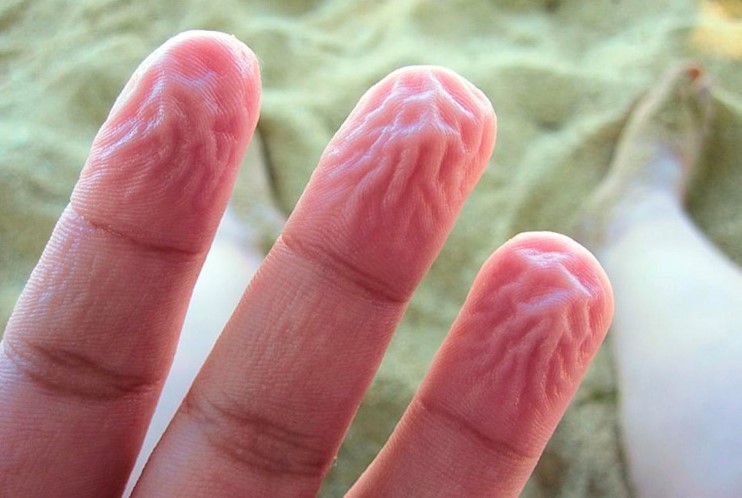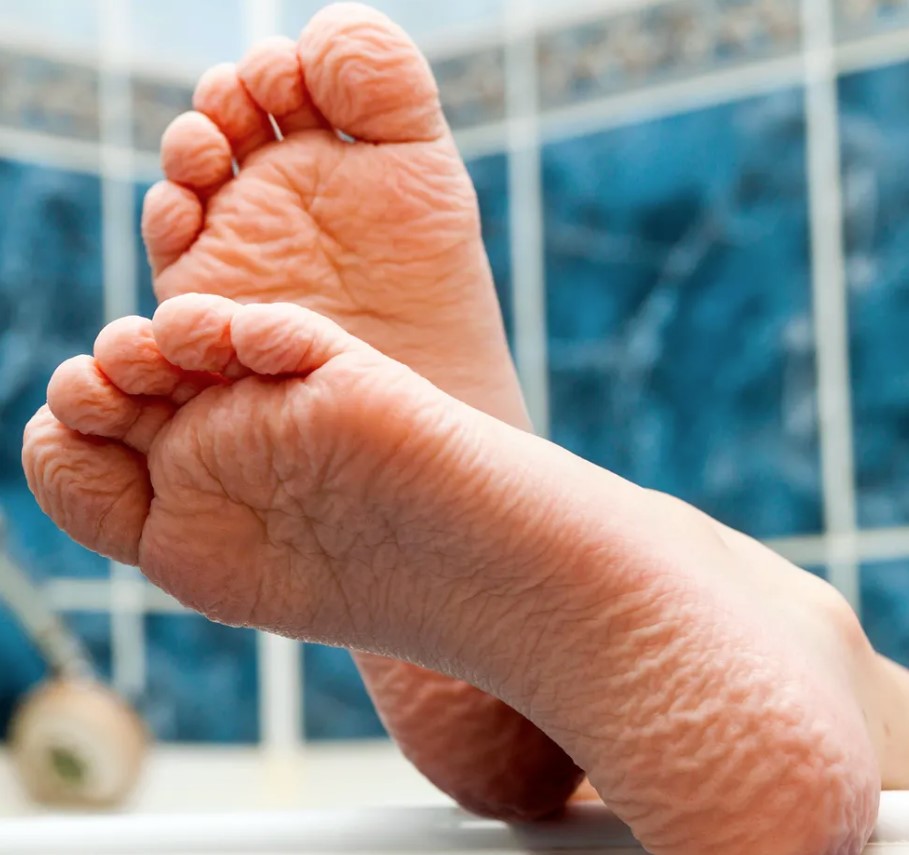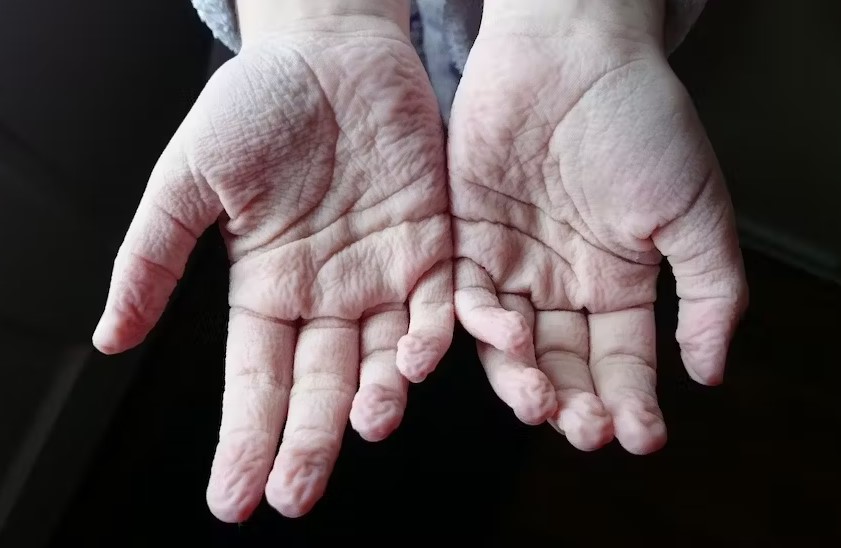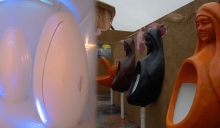
The skin on human fingers and toes is referred to as glabrous, characterized by its smooth and hairless nature
However, when exposed to water for an extended period, the glabrous skin on the fingers can undergo a distinctive wrinkling transformation, resembling the texture of a prune.
This intriguing change in the skin's appearance serves as an evolutionary adaption, specifically assisting humans in enhancing their grip on wet objects or objects immersed in water.

Long-term immersion in water causes osmosis, which allows water to enter and pass through the skin's top cells, where it is subsequently absorbed. Wrinkles are the result of simultaneous shrinking and expanding impacts in these skin cells.
The wrinkling effect that occurs after prolonged water exposure primarily affects the thickest layer of the skin, which is found on the inner surface of the hands and feet.
This thicker layer of skin is a result of constant rubbing against rough surfaces and friction experienced by the hands and feet during daily activities.
As a result, the wrinkling effect tends to be more pronounced in the hands and feet compared to other parts of the body.

When the sympathetic nerves responsible for controlling the constriction of blood vessels in the fingers and toes are severed or damaged, the wrinkling effect that typically occurs after soaking in water may not happen.
This is because the loss of nerve function disrupts the normal physiological response of the skin to water exposure.
Individuals who have undergone sympathetic nerve cuts, have certain disorders affecting nerve function, or have had their fingers replanted after amputation may exhibit a lack of wrinkling when their fingers are soaked in water for an extended period.
The impaired nerve function prevents the vasoconstriction response required for the wrinkling.

In the 1970s, doctors proposed using hand immersion in water as a bedside test to assess nerve damage that might affect unconscious processes like blood flow.
In 2003, neurologists Einar Wilder-Smith and Adeline Chow measured blood circulation in volunteers' hands as they soaked them in water.
They found that as the skin on the fingertips wrinkled, there was a significant drop in blood flow in the fingers. When anesthetic cream was applied, it produced similar levels of wrinkling as water immersion.

Psoriasis and vitiligo, for example, are skin diseases that cause wrinkles to appear later in life.
Excessive wrinkles on the hands and fingers of patients with cystic fibrosis have been observed in individuals who are genetic carriers of the disease.
When type 2 diabetics submerge their hands in water, they occasionally exhibit noticeably fewer wrinkles on their skin.
People who have experienced heart failure have also shown fewer wrinkles, possibly as a result of a disturbance in the regulation of their circulatory system.




